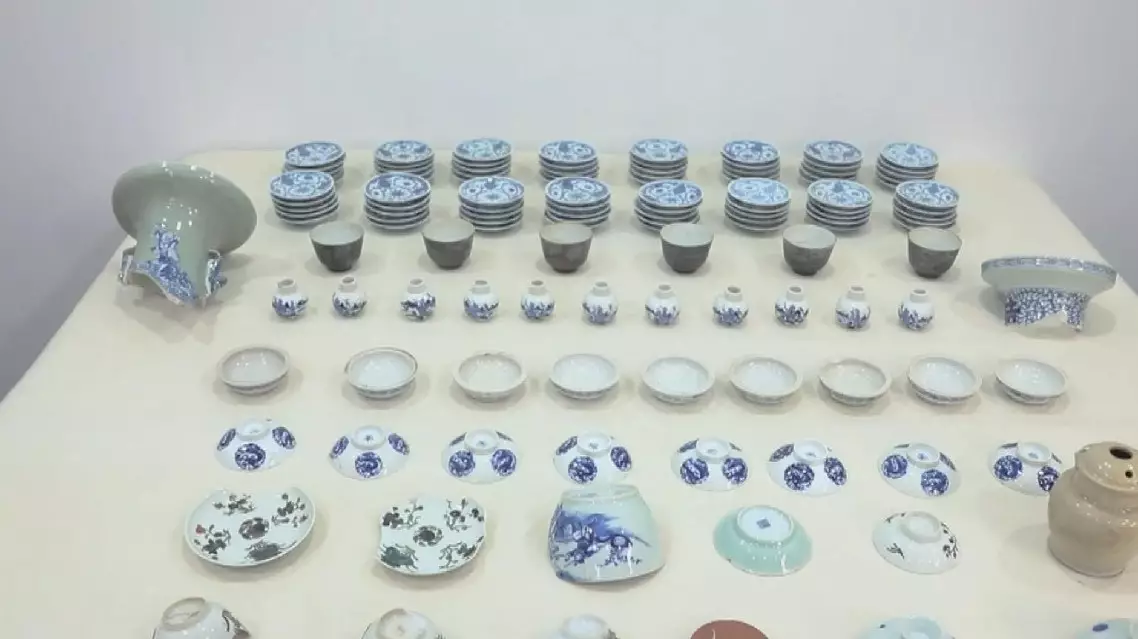New attractions and events have been added to China's tourism market for five-day May Day holiday which started on May 1.
The Juyongguan section of the Great Wall in Beijing has opened to visitors at night since the first day of the holiday, so that people could enjoy the night scenes of the ancient defensive structure.
As the dark falls, lights illuminate stone stairways of the Great Wall winding through mountains, resembling a colossal fire dragon entrenched among the peaks. Many tourists have come specially at night to marvel at the different beauty of the Great Wall.
"This is my first time to see the Great Wall at night, and it’s quite impressive," said Wang Danyi, a tourist.
In east China's Shandong Province, Zibo City is seeing a surge in visitors thanks to the buzz surrounding its popular local delicacy, "Zibo barbecue," which has been trending online since last year. Renowned for its affordability, delicious flavor, and unique method of meat wrapping, it's drawing crowds from far and wide.
With a growing number of people flocking for the food, Zibo has upgraded the market and renovated the streets, greeting visitors with renewed hospitality.
"This is popular, and I also wanted to experience the culture and customs here, and am well impressed," said Zhu Zhijing, a tourist in Zibo.
During the holiday, the city receives more than 170,000 visitors daily.
In east China's Fujian Province, many tourists flock to Xiamen City to savor local cuisines and immerse themselves in the coastal scenes. With a plethora of water recreational activities on offer, visitors experience a whole new level of adventure in Xiamen during the holiday.
In Guizhou, the provincial capital of Guiyang in the southwest, the Five-hundred-meter Aperture Spherical Radio Telescope (FAST), renowned as the world's largest single-dish radio telescope, has become a magnet for astronomy enthusiasts. Visitors and group studying tours, young and old, from home and abroad, go to the base to catch a glimpse of the equipment.
"I was intrigued by astronomy when I was young, and I've always wanted to see the FAST in China since it started to operate," said Danilo, a tourist from Brazil.
In the first three days of the holiday, the FAST visiting area received 36,700 visitors in total.
Droves of tourists with empty suitcases traveled to Yiwu in East China's Zhejiang Province, eager for a one-stop shopping extravaganza. In the first four days of the holiday, Yiwu International Trade Market, the world's largest wholesale market, received more than 52,000 visits.
"There’re facial masks, imported snacks and accessories. We came here with empty suitcases and we're trying to fill them up before going back," said a tourist surnamed Xu.

New attractions added to tourism market during May Day holiday
Archaeologists from Shanghai-based Fudan University have hailed the game-changing role of ancient DNA in exploring China's rich history, as the innovative approach has become a cornerstone in unearthing mysteries of the past, helping researchers to delve deeper into the stories of ancestors.
Led by Wen Shaoqing from the university's Institute of Archaeological Science, the team has made ground-breaking achievements in identification of flora and fauna as well as sediments in ancient times.
Wen took artifacts uncovered during the salvage of the Yangtze River Estuary No. 2, China's largest and best-preserved ancient underwater wooden shipwreck.
"For example, we took a big amphora with a height of some 60 centimeters out of the Yangtze River Estuary No. 2 salvage. The DNA approach showed the content inside the jar was divided into two layers, with the upper part being basically aquatic and the lower of the rest 30 centimeters related with land. Rice DNA is dominant among all DNA extracted from the jar. Why? Because there were too many cups inside the amphora. To save space, cups were put together closely and tightly. When we separated cups from each other, we found rice husks crammed between cups. Then we got to know that the rice husks were used to prevent the cups from getting crushed. So rice husks were put inside as [shakeproof] stuffing," said Wen.
What's more, the archaeological team detected bamboo DNA from the relics, revealing new findings of the shipping lines.
"The cups used to be tied up with bamboos when being packed. But we can't see these bamboos inside as they had already got rotten. The detection of bamboo DNA and rice husk DNA showed that these things were from Jiangxi Province. And the porcelains were from Jingdezhen in Jiangxi. We then came to a conclusion that the sunken ship had anchored in Jiangxi, where the Jingdezhen ceramics were transported aboard. As for the sunken ship, at least we know that it sailed from Jingdezhen before the submergence," he said.
Wen also said the sediments in the shipwreck is of great significance to uncover more mysteries.
"If a cabin was overrun with escherichia coli and the like, it was believed to be a restroom. From the fouling on the bottom of the ship, we can probably know where it had been to. That's because different microbes were attached to the bottom of the ship when it sailed to different waters, which can tell us its whereabouts. In other words, we're salvaging a piece of history instead of a shipwreck. These sci-tech methods help us fully unfold these pieces of history. It surely carries the greatest significance in our archaeological work." Wen said.
The Yangtze River Estuary No.2 was a sailing ship from the reign of the Tongzhi Emperor of Qing Dynasty (1644-1911). The shipwreck is about 38.5 meters long and 7.8 meters wide, and it contains 31 cabins. The ship is "sleeping" under the waters northeast of Shanghai's Hengsha Island, with its hull buried 5.5 meters under the seabed.

Archaeologists highlight DNA approach to unlocking historical mysteries










